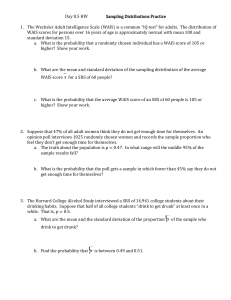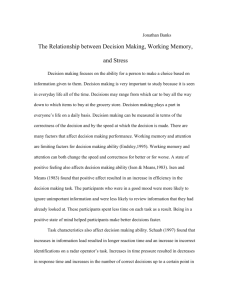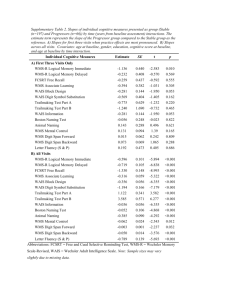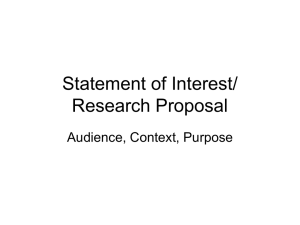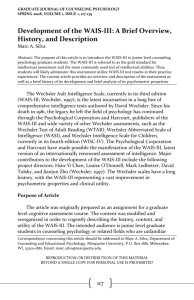Diablo Valley College Fall 2009 Business 240 Solutions Exam #2
advertisement
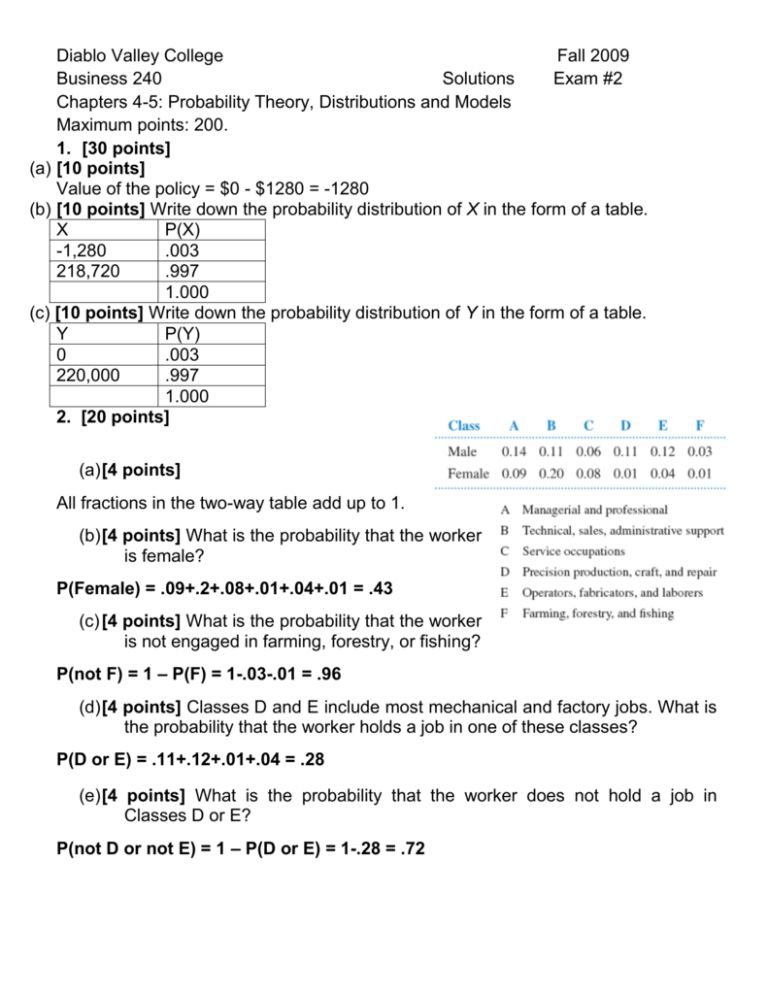
Diablo Valley College Fall 2009 Business 240 Solutions Exam #2 Chapters 4-5: Probability Theory, Distributions and Models Maximum points: 200. 1. [30 points] (a) [10 points] Value of the policy = $0 - $1280 = -1280 (b) [10 points] Write down the probability distribution of X in the form of a table. X P(X) -1,280 .003 218,720 .997 1.000 (c) [10 points] Write down the probability distribution of Y in the form of a table. Y P(Y) 0 .003 220,000 .997 1.000 2. [20 points] (a) [4 points] All fractions in the two-way table add up to 1. (b) [4 points] What is the probability that the worker is female? P(Female) = .09+.2+.08+.01+.04+.01 = .43 (c) [4 points] What is the probability that the worker is not engaged in farming, forestry, or fishing? P(not F) = 1 – P(F) = 1-.03-.01 = .96 (d) [4 points] Classes D and E include most mechanical and factory jobs. What is the probability that the worker holds a job in one of these classes? P(D or E) = .11+.12+.01+.04 = .28 (e) [4 points] What is the probability that the worker does not hold a job in Classes D or E? P(not D or not E) = 1 – P(D or E) = 1-.28 = .72 3. [40 points] An IQ test. The Wechsler Adult Intelligence Scale (WAIS) is a common “IQ test” for adults. The distribution of WAIS scores for persons over 16 years of age is approximately Normal with mean 100 and standard deviation 15. (a) [10 points] What is the probability that one randomly chosen individual has a WAIS score of 105 or higher? [hint: use the bell curve generator spreadsheet] =1-normdist(105,100,15,1) = .3694 (b) [10 points] What are the mean and standard deviation of the average WAIS score, , for a Simple Random Sample (SRS) of (n=) 60 people? [hint: use the Central Limit Theorem] ~ N(100,15/sqrt(60)) … standard error = std dev of =1.94 (c) [10 points] What is the probability that the sample mean (average) WAIS score of an SRS of 60 people is 105 or higher? [hint: use the bell curve generator spreadsheet] =1-normdist(105,100,1.94,1) = .0049 (d) [10 points] Explain why your answers to any of (a), (b), or (c) would not be affected if the distribution of WAIS scores in the adult population were distinctly non-Normal? [hint: look through section 4.4 and the Central Limit Theorem content to help you answer this question] (a) can’t be computed if X is NOT normal b/c we could not use “=normdist()” or table A if X does not follow a normal distribution shape. (b) and (c) would stay the same b/c n ≥ 30, n is random and thus the Central Limit Theorem ensures that we can use “=normdist()” for probabilities about 4. [10 points] a) [5 points] You win the jackpot if all three wheels show bells. What is the probability of winning the jackpot? P(X=3) = .05*.45*.05 = .0011 b) [5 points] What is the probability that the wheels stop with exactly 2 bells showing? P(X=2) = (.05*.45*.95) + (.95*.45*.05) + (.05*.55*.05) = .0441 5. [25 points] Education and work. a) [5 points] Find the unemployment rate for people with each level of education. How does the unemployment rate change with education? Explain carefully why your results show that level of education and being employed are not independent. As the level of education increases the rate of unemployment decreases; therefore there is a DEPENDENCE between the two variables (education AND unemployment). b) [5 points] What is the probability that a randomly chosen person 25 years of age or older is in the labor force? P(LF) = 0.67423208 c) [5 points] If you know that the person chosen is a college graduate, what is the conditional probability that he or she is in the labor force? P(LF|College Grad)= 0.78700049 =37281/47371 d) [5 points] Are the events “in the labor force” and “college graduate” independent? How do you know? Since P(LF) ≠ P(LF|College Grad) we can say that the events are NOT independent. e) [5 points] You know that a person is employed. What is the conditional probability that he or she is a college graduate? [2 points] P(College Grad |Emp) = 0.31664483 =36259 / 114510 You know that a second person is a college graduate. What is the conditional probability that he or she is employed? [3 points] P(Emp | College Grad) = 0.97258657 =36259 / 37281 6. [15 points] How many calls? Calls to the customer service department of a cable TV provider are made randomly and independently at a rate of 11 per minute. The company has a staff of 20 customer service specialists who handle all the calls. Assume that none of the specialists are on a call at this moment and that a Poisson model is appropriate for the number of incoming calls per minute. (a) [5 points] What is the probability of the customer service department receiving more than 20 calls in the next minute? =1-poisson(20,11,1) = 0.0047 (b) [5 points] What is the probability of the customer service department receiving exactly 20 calls in the next minute? =poisson(20,11,0) = 0.0046 (c) [5 points] What is the probability of the customer service department receiving fewer than 11 calls in the next minute? =poisson(10,11,1) = 0.4599 7. [35 points] Unmarried women. Among employed women, 25% have never been married. Select 10 employed women at random. (a) [5 points] The number in your sample who have never been married has a binomial distribution. What are n and p? n=10; p=.25 (b) [10 points] What is the probability that exactly 2 of the 10 women in your sample have never been married? =binomdist(2,10,.25,0) = 0.2816 (c) [10 points] What is the probability that 2 or fewer have never been married? =binomdist(2,10,.25,1) = 0.5256 (d) [10 points] What is the mean number of women in such samples who have never been married? What is the standard deviation? = n*p = 10*.25 = 2.5 = sqrt(n*p*(1-p)) =sqrt(10*.25*.75) = 1.3693 8. [25 points] Loan officer decision. (a) [5 points] Express the three probabilities given in the problem in the notation of probability and conditional probability. Probabilities are in GREEN (b) [10 points] What is the probability that the customer will default on the loan? P(Default?Yes) = P(YandY.or.NandY) = .032+.0036 = .0356 (c) [10 points] Considering the information provided in the previous exercise, calculate P(O|D). Show your work. Also, express this probability in words in the context of the loan officer’s decision. If new information about the customer becomes available before the loan officer makes her decision and if this information indicates that there is only a 25% chance that this customer will overdraw his account, rather than a 40% chance, how does this change P(O|D)? P(O|D) = P(O and D) / P(D) = .032/.0356 = .8989, when P(O) = 40%. P(O|D) = P(O and D) / P(D) = .02/(.02+.0045) = .8163, when P(O) = 25%
